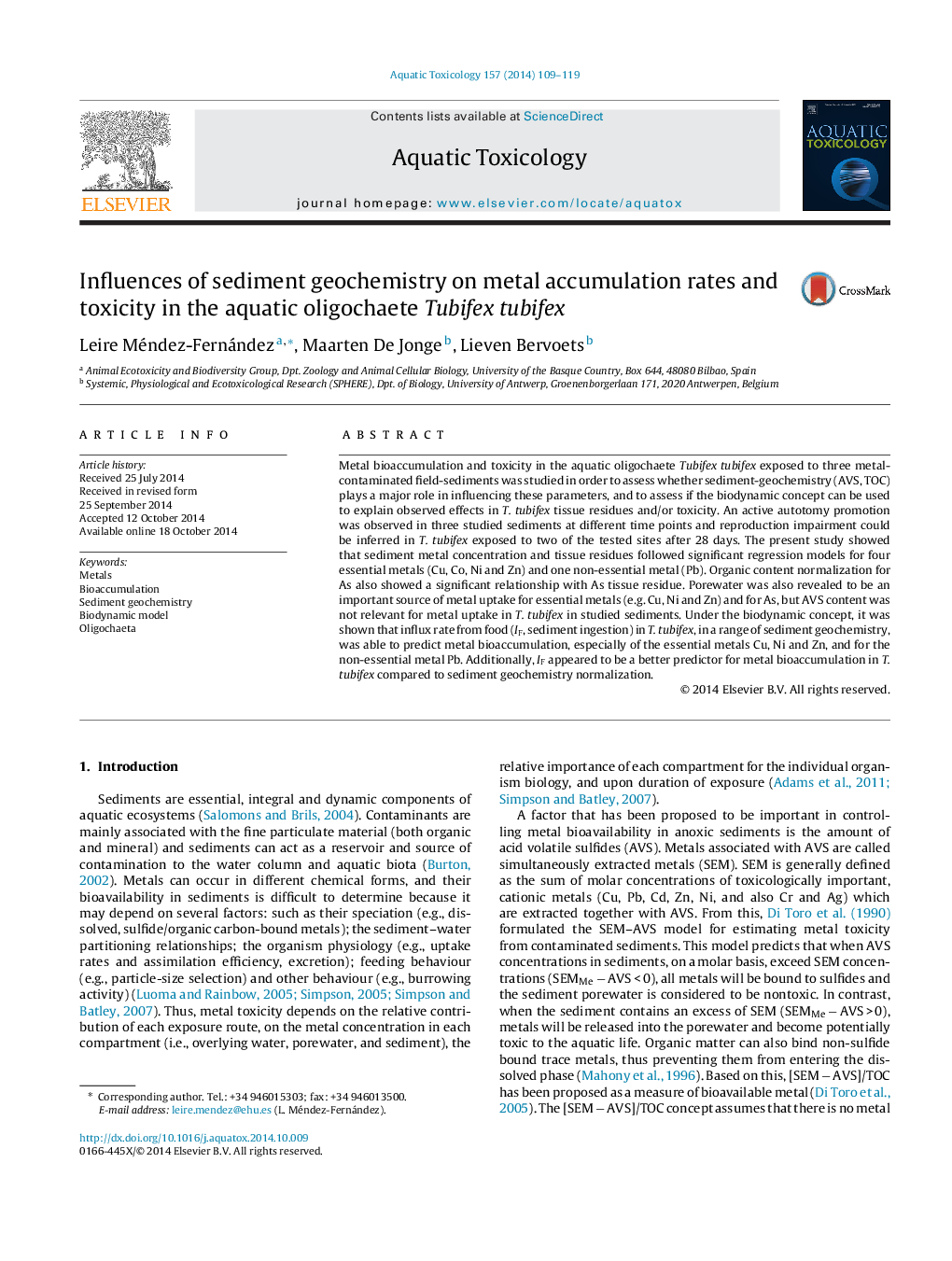| کد مقاله | کد نشریه | سال انتشار | مقاله انگلیسی | نسخه تمام متن |
|---|---|---|---|---|
| 4529299 | 1625948 | 2014 | 11 صفحه PDF | دانلود رایگان |

• Biodynamic model in T. tubifex: sediment ingestion predicts metal bioaccumulation.
• Metal bioaccumulation and toxicity in T. tubifex was time-dependant.
• AVS did not play a major role in influencing toxicity or metal bioaccumulation.
• Autotomy actively promoted during the exposure period in polluted sediments.
Metal bioaccumulation and toxicity in the aquatic oligochaete Tubifex tubifex exposed to three metal-contaminated field-sediments was studied in order to assess whether sediment-geochemistry (AVS, TOC) plays a major role in influencing these parameters, and to assess if the biodynamic concept can be used to explain observed effects in T. tubifex tissue residues and/or toxicity. An active autotomy promotion was observed in three studied sediments at different time points and reproduction impairment could be inferred in T. tubifex exposed to two of the tested sites after 28 days. The present study showed that sediment metal concentration and tissue residues followed significant regression models for four essential metals (Cu, Co, Ni and Zn) and one non-essential metal (Pb). Organic content normalization for As also showed a significant relationship with As tissue residue. Porewater was also revealed to be an important source of metal uptake for essential metals (e.g. Cu, Ni and Zn) and for As, but AVS content was not relevant for metal uptake in T. tubifex in studied sediments. Under the biodynamic concept, it was shown that influx rate from food (IF, sediment ingestion) in T. tubifex, in a range of sediment geochemistry, was able to predict metal bioaccumulation, especially of the essential metals Cu, Ni and Zn, and for the non-essential metal Pb. Additionally, IF appeared to be a better predictor for metal bioaccumulation in T. tubifex compared to sediment geochemistry normalization.
Journal: Aquatic Toxicology - Volume 157, December 2014, Pages 109–119